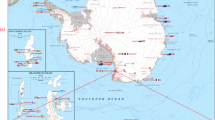Abstract
More and more fixed underwater observatories (FUO) are being used for high temporal coverage and resolution monitoring of specific areas of interest, such as coral reefs. FUOs equipped with fixed HD cameras and other sensors make it possible to relate visual characteristics of a species to characteristics of its environment.
The aim of this study is to demonstrate how changes in size of sponges can be tracked automatically over time and to investigate to what extent various environmental parameters might influence the behaviour. Both gradual long-term changes and major short-term changes of the sponge size should be taken into consideration. This is the first study that estimates sponge sizes over a long time period.
We present and evaluate an automated process based on a convolutional network (the U-Net) to automatically generate a series of sponge sizes from an image series showing one sponge over a time-interval of 9 month. Further, we analyze the resulting time series together with additional data of the sponge habitat. Our experiments show that our work-flow produces a reliable segmentation of the sponge that can be used for further analysis of the sponge behaviour. Moreover, our results indicate that an increased salinity of the surrounding water is associated to a more frequent pumping activity of the sponge.
Access this chapter
Tax calculation will be finalised at checkout
Purchases are for personal use only
Similar content being viewed by others
Notes
References
Aguzzi, J., Costa, C., et al.: Behavioral rhythms of hydrocarbon seep fauna in relation to internal tides. Mar. Ecol. Prog. Ser. 418, 47–56 (2010)
Aguzzi, J., et al.: The new seafloor observatory (OBSEA) for remote and long-term coastal ecosystem monitoring. Sensors 11(6), 5850–5872 (2011)
Bernhardt, S.P., Griffing, L.R.: An evaluation of image analysis at benthic sites based on color segmentation. Bull. Mar. Sci. 69(2), 639–653 (2001)
Ocean Networks Canada: NEPTUNE in the NE Pacific (2014). http://oceannetworks.ca/installations/observatories/neptune-ne-pacific/
Godø, O.R., Johnson, S., Torkelsen, T.: The LoVe ocean observatory is in operation. Mar. Technol. Soc. J. 48(2), 24–30 (2014)
Grubbs, F.E.: Sample criteria for testing outlying observations. Ann. Math. Statist. 21(1), 27–58 (1950)
Hoer, D.R.: The role of marine sponges in carbon and nitrogen cycles of coral reef and nearshore environments. Ph.D. thesis, The University of North Carolina at Chapel Hill (2015)
Kawabata, K., et al.: Underwater image gathering by utilizing stationary and movable sensor nodes: towards observation of symbiosis system in the coral reef of Okinawa. Int. J. Distrib. Sens. Netw. 10(7) (2014)
Kingma, D.P., Ba, J.: Adam: a method for stochastic optimization. arXiv preprint arXiv:1412.6980 (2014)
Langenkämper, D., Zurowietz, M., Schoening, T., Nattkemper, T.W.: BIIGLE 2.0 - browsing and annotating large marine image collections. Front. Mar. Sci. 4, 83 (2017)
Leys, S.P., Yahel, G., Reidenbach, M.A., Tunnicliffe, V., Shavit, U., Reiswig, H.M.: The sponge pump: the role of current induced flow in the design of the sponge body plan. PLOS ONE 6(12), 1–17 (2011)
Osterloff, J., Nilssen, I., Järnegren, J., Buhl-Mortensen, P., Nattkemper, T.W.: Polyp activity estimation and monitoring for cold water corals with a deep learning approach. In: 2016 ICPR 2nd Workshop on Computer Vision for Analysis of Underwater Imagery (CVAUI), pp. 1–6. IEEE (2016)
Osterloff, J., Nilssen, I., Nattkemper, T.W.: A computer vision approach for monitoring the spatial and temporal shrimp distribution at the love observatory. Methods Oceanogr. 15, 114–128 (2016)
Osterloff, J., Nilssen, I., Nattkemper, T.W.: Computational coral feature monitoring for the fixed underwater observatory LoVe. In: Proceedings of IEEE OCEANS 2016 (2016)
Ronneberger, O., Fischer, P., Brox, T.: U-Net: convolutional networks for biomedical image segmentation. CoRR abs/1505.04597 (2015)
Spearman, C.: The proof and measurement of association between two things. Am. J. Psychol. 15(1), 72–101 (1904)
Teixidó, N., Albajes-Eizagirre, A., et al.: Hierarchical segmentation-based software for cover classification analyses of seabed images (Seascape). Mar. Ecol. Prog. Ser. 431, 45–53 (2011)
Riisgaard, H.U., Larsen, P.S.: Filter feeding in marine macro invertebrates: pump characteristics, modelling and energy cost. Biol. Rev. 70(1), 67–106 (1995)
Vardaro, et al.: A Southeast Atlantic deep-ocean observatory: first experiences and results. Limnol. Oceanogr.: Methods 11, 304–315 (2013)
Welch, B.L.: The generalization of ‘student’s’ problem when several different population variances are involved. Biometrika 34(1/2), 28–35 (1947)
Acknowledgments
We thank Equinor for the financial support and for providing image and sensor data as well as NVIDIA Corporation for donating the GPU used in this project. We thank Jens Plettemeier for conducting experiments.
Author information
Authors and Affiliations
Corresponding author
Editor information
Editors and Affiliations
Rights and permissions
Copyright information
© 2019 Springer Nature Switzerland AG
About this paper
Cite this paper
Möller, T., Nilssen, I., Nattkemper, T.W. (2019). Tracking Sponge Size and Behaviour with Fixed Underwater Observatories. In: Zhang, Z., Suter, D., Tian, Y., Branzan Albu, A., Sidère, N., Jair Escalante, H. (eds) Pattern Recognition and Information Forensics. ICPR 2018. Lecture Notes in Computer Science(), vol 11188. Springer, Cham. https://doi.org/10.1007/978-3-030-05792-3_5
Download citation
DOI: https://doi.org/10.1007/978-3-030-05792-3_5
Published:
Publisher Name: Springer, Cham
Print ISBN: 978-3-030-05791-6
Online ISBN: 978-3-030-05792-3
eBook Packages: Computer ScienceComputer Science (R0)




